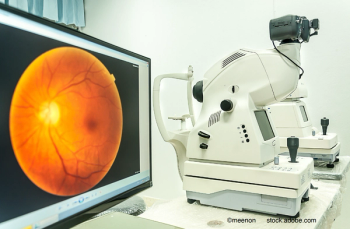
Researchers examine novel mechanism of retinal degeneration
Investigators at Shandong Normal University in China discovered that ciliary disassembly in photoreceptors is a significant event in the pathogenesis of retinal degeneration.
Photoreceptors, as polarized sensory neurons, are key for light sensation and phototransduction, which are highly dependent on the photoreceptor cilium. Disruption of photoreceptor cilia has been implicated in a variety of retinal diseases, collectively called retinociliopathies, such as Leber congenital amaurosis and retinopathy of prematurity.
According to a China Sciences Press news release, a team of researchers, including corresponding authors Prof. Jun Zhou and Assoc Prof. Jie Ran from Shandong Normal University, has found that ciliary disassembly in photoreceptors is a significant event in the pathogenesis of retinal degeneration.1
“To investigate the exact changes in photoreceptors, we examined the longitudinal sections of photoreceptors with transmission electron microscopy,” the researchers wrote in the study. “We found that the membranous disks, where phototransduction initates, were destroyed in RD mice.”
Moreover, the researchers pointed out in the study that the ciliary axoneme, which is responsible for transporting proteins involved in phototransduction into membranous disks, was significantly shortened.2
“This result implies that in RD-related pathological process, the disassembly of ciliary axoneme might be a critical event leading to the disruption of membranous disks and dysfunction of the photoreceptor,” the researchers wrote.
Their work demonstrated a significant reduction in retinal electrophysiological a-wave and b-wave responses and a marked decrease in the thickness of the outer nuclear layer (ONL) in RD mice, indicating severe damage to photoreceptors. Transmission electron microscopy and immunofluorescence microscopy analyses revealed varying degrees of damage to photoreceptor membrane discs and ciliary axonemes. These results indicate that photoreceptor ciliary disassembly is a key event triggering photoreceptor dysfunction and retinal damage in the pathological process of RD.2
In general, the team’s research elucidates the significant role of photoreceptor cilia in RD and provides novel targets for clinical intervention in RD.
“In summary, the present study reveals a crucial event of photoreceptor cilium disassembly in the pathological processes associated with RD,” the researchers concluded. “Our findings indicate that the disruption of both the ciliary axoneme and membranous disks is a key factor causing photoreceptor dysfunction and degeneration in RD, suggesting that mechanisms of disc shedding are linked to ciliary shedding. Further studies are warranted to investigate the molecular mechanisms underlying photoreceptor ciliary shedding in RD.”
The research was supported by grants from the National Natural Science Foundation of China.3
References
1. Novel mechanism of retinal degeneration. EurekAlert! Published July 31, 2024. https://www.eurekalert.org/news-releases/1053190
2. Guizhi Guo, Runa Wang, Yufei Zhang, Zhiyi Wang, Lin Li, Miaoyuan Liu, Jun Zhou, Jie Ran, Disruption of photoreceptor cilia is a critical event in the pathogenesis of retinal degeneration—Insights from N-methyl-N-nitrosourea-induced mouse model, Medicine Plus, Volume 1, Issue 3, 2024, 100040, ISSN 2950-3477, https://doi.org/10.1016/j.medp.2024.100040. (https://www.sciencedirect.com/science/article/pii/S2950347724000367)
3. Novel mechanism of retinal degeneration. EurekAlert! Published July 31, 2024. Accessed August 4, 2024. https://www.eurekalert.org/news-releases/1053190
Newsletter
Keep your retina practice on the forefront—subscribe for expert analysis and emerging trends in retinal disease management.
















































